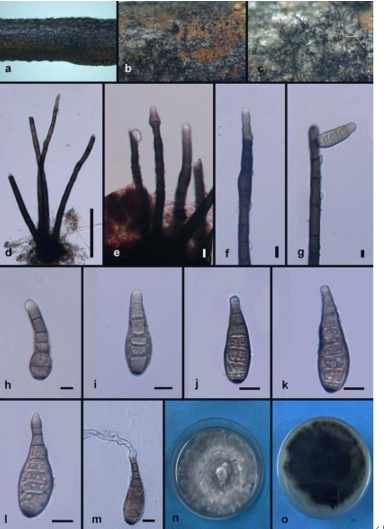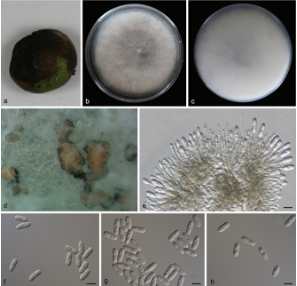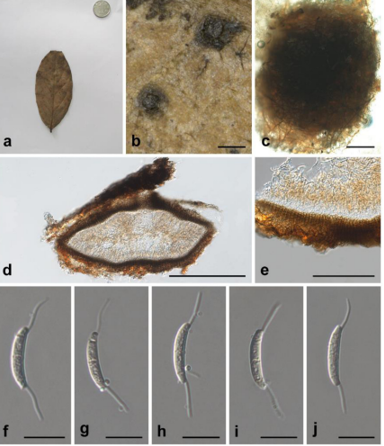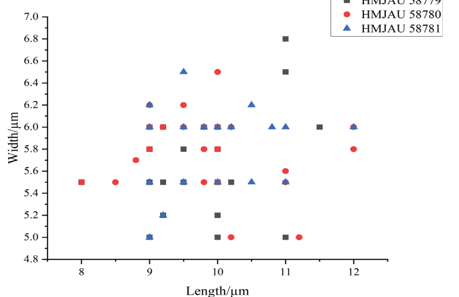Tomentella brunneoflava H.S. Yuan, X. Lu & Y.C. Dai 2020
Index Fungorum number: IF555631; Facesoffungi number: FoF 05606
Holotype: CHINA, Liaoning Province, Qingyuan County, Experimental Station of Forest Ecology, on rotten angiosperm wood debris, 31 July 2017, Yuan 12162 (IFP 019251, holotype); on fallen branch of Larix sp., 31 July 2017, Yuan 12161 (IFP 019252).
Morphological description
Basidiocarps annual, resupinate, adherent to the substrate, arachnoid, without odour or taste when fresh, 0.8–1.5 mm thick, continuous. Hymenophoral surface smooth, brownish yellow (5C8) and concolorous with subiculum when dry. Sterile margin often indeterminate, byssoid, concolorous with hymenophore. Rhizomorphs present in subiculum and margins, 5–35 μm diam; rhizomorphic surface more or less smooth; hyphae in rhizomorph monomitic, undifferentiated, of type B, compactly arranged and of uniform; single hyphae with both clamps and simple septa, thick-walled, unbranched, 2–4 μm, pale brown in KOH and in distilled water, cyanophilous, inamyloid. Subicular hyphae monomitic; generative hyphae clamped and rarely simple septate, thin- to slightly thick-walled, occasionally branched, 2–5 μm diam, without encrustation, pale brown in KOH, acyanophilous, inamyloid. Subhymenial hyphae clamped and rarely simple septate, thin-walled, occasionally branched, 3–5 μm diam; hyphal cells short and not inflated, pale brown in KOH, inamyloid. Cystidia absent. Basidia 10–30 μm long and 3–5 μm diam at apex, 2–3.5 μm at base, with a clamp connection at base, clavate, not stalked, sinuous, with transverse septa, pale brown in KOH and in distilled water, 4-sterigmate; sterigmata 3–5 μm long and 1–1.5 μm diam at base. Basidiospores slightly thick-walled, (6.5–)7–8(–8. 5) × (5–)5.5–7(–7.5) μm, L = 7.78 μm, W = 6.29 μm, Q = 1. 19-1.24 (n = 60/2), subglobose to bi- or tri-lobed in frontal and lateral views, echinulate, pale brown in KOH and distilled water, cyanophilous, inamyloid; echinuli usually isolated, sometimes grouped in 2 or more, up to 1.5 μm long.
Habitat: On rotten angiosperm wood debris.
Distribution: In China.
GenBank Accession: ITS: MK211749, MK211748; LSU: MK850194, MK446341.
Notes: Tomentella botryoides has characteristics similar to T. brunneoflava, such as continuous basidiocarps, a byssoid sterile margin, clavate basidia and the presence of rhizomorphs. However, T. botryoides differs from T. brunneoflava by having fuscous black, mouse grey or greyish sepia and pelliculose basidiocarps, more or less uniform subhymenial hyphal cells and subglobose to bi-, tri-lobed basidiospores (Kõljalg 1996; Daemmrich 2006). T. aureomarginata resembles T. brunneoflava by having continuous basidiocarps adherent to the substrate, a smooth hymenophoral surface, a byssoid sterile margin, the presence of rhizomorphs, the absence of cystidia, clamped and rarely simple septate hyphae and short subhymenial hyphal cells. T. aureomarginata differs by the honey yellow to raw umber colour of the basidiocarps and utriform basidia.
Reference: Hai‑Sheng Yuan1,2· Xu Lu1,2 · Yu‑Cheng Dai3 ·
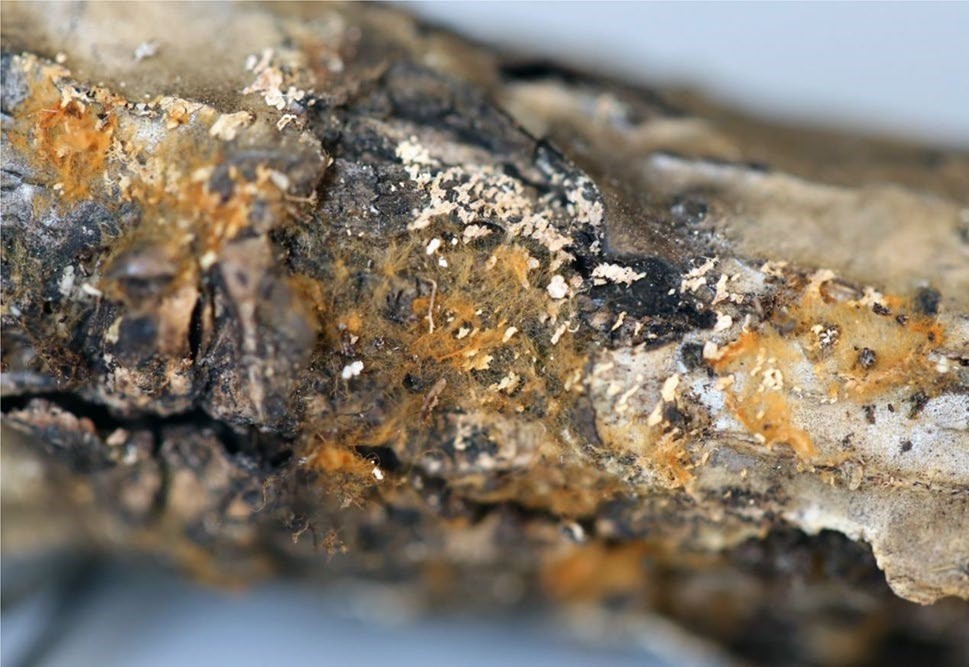
Basidiocarps of Tomentella brunneoflava (IFP 019251, holotype)


